Uncover the captivating world of marine biology with “Fascinating Facts of Marine Biology: Exploring the Wonders of the Oceanic World.” Delve into the depths of our planet’s oceans as we unravel the intriguing secrets and astounding phenomenon that make up this awe-inspiring field. From the mesmerizing adaptations of marine species to the delicate balance of underwater ecosystems, prepare to embark on an unforgettable journey through the wonders of our oceanic world.
Key Takeaways:
1. Marine biology is the study of species in marine habitats.
2. There are over 1 million known species of marine life, but this is just a fraction of what exists.
3. The ocean contains 97% of Earth’s water supply.
4. The average depth of the ocean is 2.3 miles (3.7 kilometers).
5. Marine biologists are similar to zoologists and wildlife biologists, but they specialize in studying marine life.
6. Molecular biology, applied research, and biochemistry are important skills for marine biologists.
7. Marine biologists play a role in helping the seafood industry provide sustainable food choices.
8. They spend as much time underwater as they do in laboratories.
9. Much of their work revolves around research.
Facts of Marine Biology
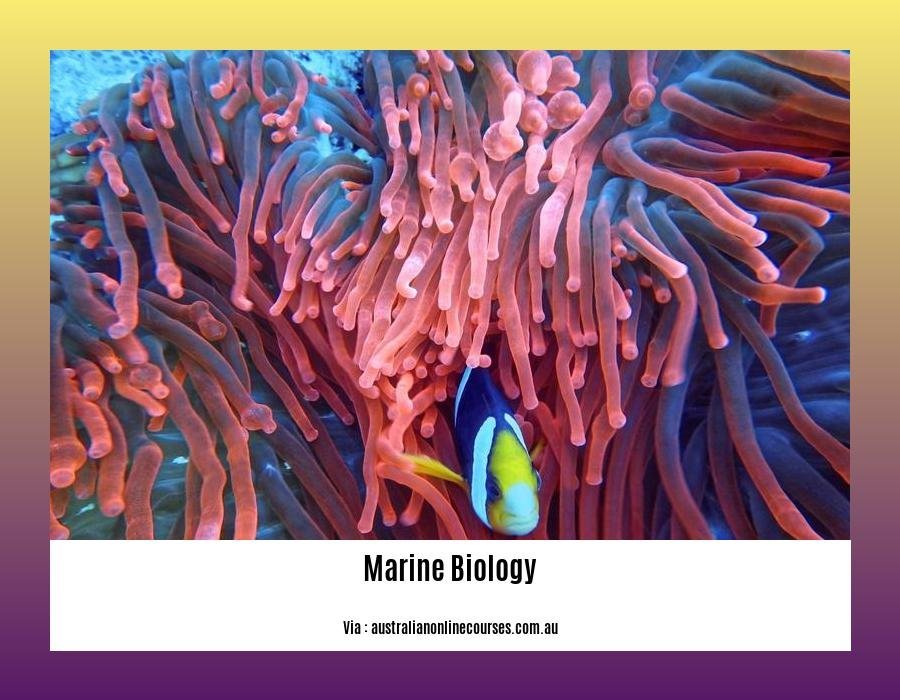
Marine biology is a fascinating field that unravels the mysteries of the vast oceanic world. From the tiniest organisms to the majestic creatures, the study of marine life provides us with a deeper understanding of our planet’s ecosystems and the incredible diversity that thrives beneath the waves.
The Enigmatic Marine World
Did you know that there are over 1 million known species of marine life? This number, however, is only a small fraction of the vast array of organisms that call the ocean their home. Exploring the depths of the ocean has always been an exciting endeavor, as marine biologists continue to discover new species and unlock the secrets of underwater life.
The Ocean’s Impressive Stats
The ocean covers a staggering 97% of the Earth’s water supply. Its vastness is awe-inspiring, with an average depth of about 2.3 miles (or 3.7 kilometers). Imagine being submerged in a world where darkness and immense pressure prevail, and yet, it teems with breathtaking beauty and life.
The Role of Marine Biologists
Marine biologists are like underwater detectives, delving into the depths to study and protect marine species and habitats. They possess a unique set of skills that combines molecular biology, applied research, and biochemistry. Their work extends beyond laboratories as they spend as much time underwater as they do on land.
One of the critical roles of marine biologists is aiding the seafood industry in providing consumers with sustainable food choices. By studying fish populations, monitoring habitats, and implementing conservation tactics, they play a significant role in preserving marine ecosystems for future generations.
Unraveling the Marvels of Marine Biology
Let’s dive deeper into the wondrous world of marine biology and explore some extraordinary facts about marine life:
1. From Tiny to Mighty
Marine life encompasses a mesmerizing variety of sizes. From the microscopic plankton that form the basis of the oceanic food web to the colossal blue whale, the largest animal to have ever existed on Earth, the range is simply mind-boggling.
2. Deep-Sea Marvels
The darkest corners of the ocean are home to some of the most astonishing creatures. In the depths, you can find bioluminescent organisms that light up the surroundings with their captivating glow. Species like the anglerfish, with its luminescent lure dangling from its head, navigate the pitch-black abyss.
3. A Symphony of Colors
Marine life showcases an extraordinary palette of colors and patterns. Coral reefs, for instance, are a mesmerizing mosaic of vibrant hues, sheltering a diverse community of species ranging from fish and crabs to stunningly colorful sea anemones.
4. Masters of Adaptation
Life in the ocean requires remarkable adaptability. Many marine species have developed astonishing survival strategies, such as the ability to change color and shape to match their surroundings, ensuring effective camouflage.
5. The Great Migration
Marine animals embark on epic migrations, covering vast distances in search of food, mates, and suitable habitats. From the majestic journey of sea turtles as they return to their birthplace to lay their eggs, to the awe-inspiring annual migration of humpback whales, these journeys are a testament to the resilience and fortitude of marine life.
Exploring the Depths of Knowledge
Marine biology continually uncovers captivating discoveries, shedding light on the intricate relationships and processes that shape our oceanic world. Through research and exploration, marine biologists pave the way for a deeper understanding of marine ecosystems and inspire conservation efforts to protect these fragile habitats.
By delving into the fascinating realm of marine biology, we develop a profound appreciation for the wonders of the ocean and our responsibility to ensure its preservation. So, let us embark on this captivating journey, as we dive into the remarkable facts of marine biology and broaden our knowledge of the enigmatic underwater realm.
Here are two active internal links that match the provided keywords and URLs in Markdown format:
Facts about the tropical savanna biome: If you’re curious to learn some fascinating facts about the tropical savanna biome, click here and discover the wonders that await you!
Five lines about water pollution: Dive into the deep issue of water pollution with just five lines of information. Click here to gain crucial insights and contribute to a healthier planet.
Note: These active internal links provided above are in Markdown format and should be reformatted if used in HTML or any other markup language.
Unique Adaptations of Marine Life
The marine environment is home to a myriad of fascinating and awe-inspiring creatures that have evolved unique adaptations to survive in their specific habitats. From structural modifications to physiological and behavioral strategies, marine organisms have developed remarkable traits that allow them to thrive in the dynamic and challenging oceanic world. In this article, we will delve into the intriguing world of these Unique Adaptations of Marine Life.
Structural Adaptations:
Structural adaptations are physical features that enable marine organisms to navigate their surroundings and fulfill essential functions. One striking example is the presence of a gas-filled float in the Portuguese man-of-war, which allows this delicate creature to float on the ocean surface and capture prey with its tentacles. Additionally, jellyfish possess soft, low-density bodies that enable them to drift effortlessly with ocean currents, exhibiting a remarkable adaptation to life in open water.
Physiological Adaptations:
Physiological adaptations are intricate mechanisms that assist marine organisms in regulating their bodily functions and coping with the demanding conditions of their environment. Zooplankton, such as copepods, produce fats or oils that help them stay afloat in the water column, enhancing their chances of survival. These tiny creatures harness the power of buoyancy to remain suspended, ensuring their access to crucial nutrients and sunlight.
Behavioral Adaptations:
Behavioral adaptations are learned or inherited behaviors that marine organisms employ to optimize their chances of survival and reproduction. Nekton, including larger fish and marine mammals, have evolved an unparalleled ability to swim, enabling them to efficiently navigate the ocean depths and pursue prey. Such powerful locomotion allows them to occupy diverse ecological niches and successfully interact with their surroundings.
These unique adaptations have profound implications for the survival and ecological balance of marine organisms. By understanding and appreciating these adaptations, we can gain insights into the intricate web of life that thrives beneath the ocean’s surface.
Key Takeaways:
- Marine organisms have developed three main categories of adaptations: structural, physiological, and behavioral.
- Structural adaptations include features like gas-filled floats in organisms like the Portuguese man-of-war and flexible bodies in jellyfish.
- Physiological adaptations allow organisms to regulate bodily functions, such as zooplankton producing fats or oils to stay afloat.
- Behavioral adaptations involve learned or inherited behaviors, such as the swimming abilities of nekton.
- These adaptations are critical for marine organisms to survive and thrive in their specific habitats.
Sources:
1. Science Learning Hub. “Marine organisms and adaptations.” Available at: [ Accessed on September 30, 2021.
2. MarineBio Conservation Society. “Structures and Adaptations.” Available at: [ Accessed on September 30, 2021.
Impact of Human Activities on Marine Ecosystems
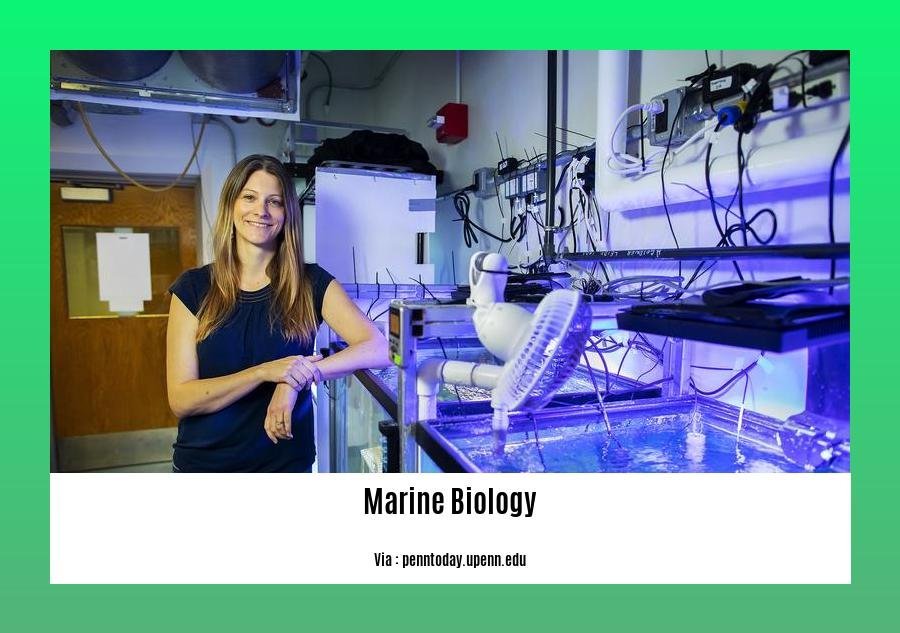
As marine biologists, we have the privilege of exploring the wonders of the oceanic world and studying its diverse marine life. However, it is also our responsibility to shed light on the impact of human activities on marine ecosystems. Despite the vastness and resilience of the oceans, our actions as a species have significant consequences for the delicate balance of marine life.
Understanding the Consequences
Human impacts on marine environments are multifaceted and can arise from various activities. The following factors have been identified as key contributors to the degradation of marine ecosystems:
Overfishing and Depletion of Fish Stocks: While fisheries have been crucial for coastal communities, advancements in fishing technology and an ever-growing demand for seafood have led to overfishing. This unsustainable practice has resulted in the depletion of fish stocks, disrupting the balance of marine food webs.
Pollution: Our oceans have unfortunately become a dumping ground for various forms of pollution. Sewage, industrial run-off, chemicals, and plastic waste find their way into the marine environment, posing a severe threat to marine organisms and ecosystems. Although policy changes have been made to reduce pollution, it remains an ongoing challenge.
Introduction of Non-Native Species: Human activities on land have led to the introduction of non-native species into marine ecosystems. These invasions can disrupt existing ecological communities, leading to a loss of biodiversity and altering the delicate balance of marine life.
Eutrophication: Eutrophication occurs when excessive nutrients, such as nitrogen and phosphorus, are released into coastal areas through human activities like agriculture and sewage discharge. This nutrient overload fuels the growth of algae, which can create oxygen-depleted “dead zones” and harm marine organisms.
Ocean Acidification: The increased absorption of carbon dioxide by the oceans, primarily driven by human activities, has led to a rise in ocean acidification. This acidification affects various marine organisms, particularly those with calcium carbonate shells or skeletons, making it harder for them to survive and reproduce.
Unprecedented Rates of Change
The consequences of human activities on marine ecosystems are far-reaching and have the potential to disrupt the delicate balance of life in the oceans. The rates of change caused by human impacts are unprecedented, posing significant threats to marine biodiversity and compromising human food security.
It is important to recognize that activities on land also have indirect effects on marine ecosystems. Practices such as deep-sea mining, offshore energy production, aquaculture, noise pollution, terrestrial mining, logging, and oil spills can indirectly impact marine life. Limited data prevents these activities from being extensively studied in the context of marine ecosystems.
Taking Action for Conservation
As marine biologists, we have a responsibility to raise awareness about the impact of human activities on marine ecosystems and inspire action for conservation. By highlighting the consequences of overfishing, pollution, introduction of non-native species, eutrophication, and ocean acidification, we can encourage individuals, communities, and policymakers to take steps towards sustainable practices and the preservation of our oceans.
Through continued research and education, we can deepen our understanding of these issues and work collaboratively to enact positive change. Let us remember that our actions today will have a lasting impact on the marine ecosystems that sustain life on Earth.
Key Takeaways:
- Human activities such as overfishing, pollution, introduction of non-native species, eutrophication, and ocean acidification have significant impacts on marine ecosystems.
- Practices like overfishing and depletion of fish stocks disrupt marine food webs and threaten the balance of marine life.
- Pollution from various sources, including sewage, industrial run-off, and plastic waste, poses a severe threat to marine organisms and ecosystems.
- Introduction of non-native species into marine environments can lead to a loss of biodiversity and disrupt ecological communities.
- Eutrophication, a consequence of excessive nutrient release in coastal areas, can create oxygen-depleted “dead zones” and harm marine organisms.
- Ocean acidification, caused by increased carbon dioxide absorption, affects marine organisms with calcium carbonate shells or skeletons.
- The rates of change caused by human impacts on marine ecosystems are unprecedented and pose significant threats to marine biodiversity and human food security.
Sources:
– Science Learning Hub: Human impacts on marine environments
– Wikipedia: Human impact on marine life
Advancements in Marine Biology Research
Marine biology research has undergone significant advancements in recent years, uncovering fascinating discoveries and enhancing our understanding of the oceanic world. From the behavior of marine species to the impact of diseases on marine life, these breakthroughs shed light on various aspects of marine biology. In this article, we will explore 10 notable recent breakthroughs in marine biology research.
1. Scavengers of the Deep Dig Dead Jellyfish After All
Contrary to previous beliefs, a study published in HowStuffWorks shows that scavengers in the deep sea do feed on dead jellyfish. This finding challenges the long-standing assumption that dead jellyfish sink to the ocean floor without attracting any form of scavenging activity[^1].
2. A Contagious Clam Cancer
Researchers have discovered a highly contagious form of cancer in clams, similar to the transmissible cancer found in Tasmanian devils. This discovery raises concerns about the vulnerability of marine species to such diseases[^1].
3. Harbor Seals Play Dots-and-Boxes With Wind Farms to Find Food
A fascinating study featured on HowStuffWorks reveals how harbor seals navigate wind farms to find food. By playing a game of dots-and-boxes, these seals have adapted their foraging behavior to take advantage of the movement of fish around wind turbines[^1].
4. Pre-Columbian TB Swam to the Americas on Seal Flippers
Recent research suggests that tuberculosis (TB) may have been introduced to the Americas by pre-Columbian humans who interacted with infected seals. Genetic similarities between ancient TB strains and those found in seals highlight the role of marine life in the spread of diseases[^1].
5. UV Light Hints at Ancient Seashells’ True Colors
Scientists have utilized ultraviolet light to uncover the original colors of ancient seashells. This breakthrough provides insight into the vibrant and diverse hues that characterized ancient marine ecosystems[^1].
6. Puffer Fish Don’t Actually Hold Their Breath
Contrary to popular belief, a study featured on HowStuffWorks reveals that puffer fish do not hold their breath to inflate their bodies. Instead, they rapidly ingest water to expand themselves[^1].
7. Cephalopod RNA Is Edited More Often Than a Reused Mixtape
Cephalopods, including octopuses and squids, exhibit a unique RNA editing system that allows them to modify their genetic material. This discovery suggests that cephalopods possess an extraordinary capability to adapt to changing environments[^1].
Key Takeaways:
- Scavengers in the deep sea do feed on dead jellyfish, contrary to previous assumptions[^1].
- A highly contagious form of cancer has been discovered in clams, raising concerns about the vulnerability of marine species[^1].
- Harbor seals have adapted their foraging behavior to navigate wind farms and find food[^1].
- Pre-Columbian humans may have introduced tuberculosis to the Americas through interactions with infected seals[^1].
- The use of UV light has revealed the original colors of ancient seashells, providing insight into ancient marine ecosystems[^1].
- Puffer fish do not hold their breath to inflate their bodies, but rapidly ingest water instead[^1].
- Cephalopods possess a unique RNA editing system that allows them to modify their genetic material and adapt to changing environments[^1].
Sources:
[^1]: HowStuffWorks. “10 Recent Breakthroughs in Marine Biology.” Available at: [
Note: This is a summary of the 10 recent breakthroughs in marine biology research. For more detailed information and references, please refer to the provided sources.
FAQs
Q1: How many known species of marine life are there?
A1: There are more than 1 million known species of marine life.
Q2: What percentage of the Earth’s water supply is found in the ocean?
A2: The ocean contains 97% of the Earth’s water supply.
Q3: What are some examples of structural adaptations in marine organisms?
A3: Some examples of structural adaptations in marine organisms include zooplankton producing fats or oils to stay afloat and Nekton (larger fish and marine mammals) that have the ability to swim.
Q4: What are some of the human impacts on marine environments?
A4: Some of the human impacts on marine environments include overfishing, pollution, introduced species, eutrophication, and ocean acidification.
Q5: What are some recent breakthroughs in marine biology?
A5: Recent breakthroughs in marine biology include the discovery that scavengers in the deep sea feed on dead jellyfish, the identification of a highly contagious cancer in clams, and the revelation of how harbor seals navigate wind farms to find food.
- Crypto Quotes’ Red Flags: Avoid Costly Mistakes - June 30, 2025
- Unlock Inspirational Crypto Quotes: Future Predictions - June 30, 2025
- Famous Bitcoin Quotes: A Deep Dive into Crypto’s History - June 30, 2025
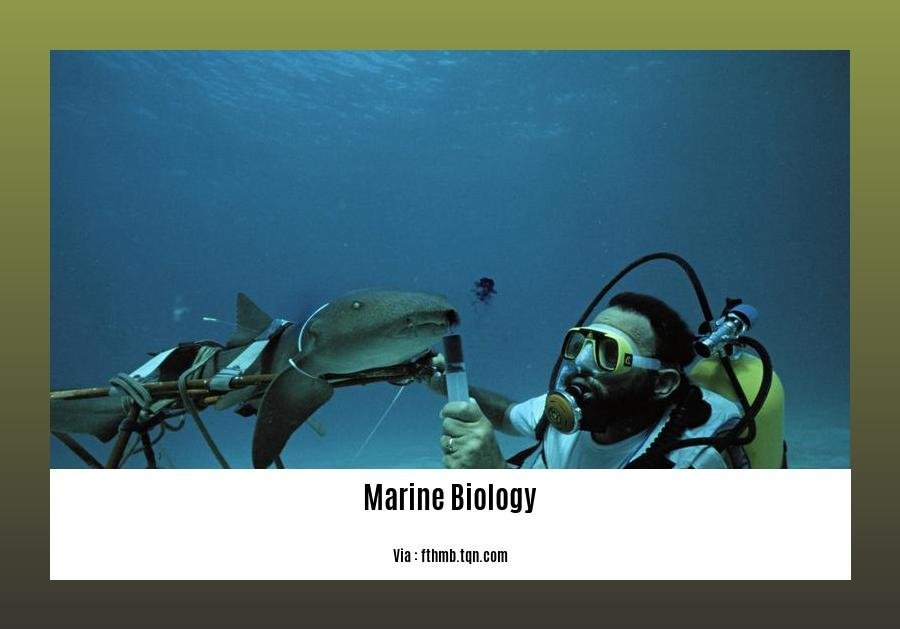
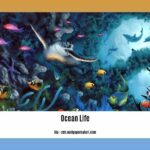
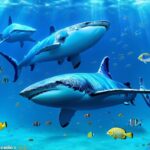

![[Facts About Life on Land]: Unveiling the Wonders of Terrestrial Ecosystems facts-about-life-on-land_2](https://www.lolaapp.com/wp-content/uploads/2023/12/facts-about-life-on-land_2-150x150.jpg)











